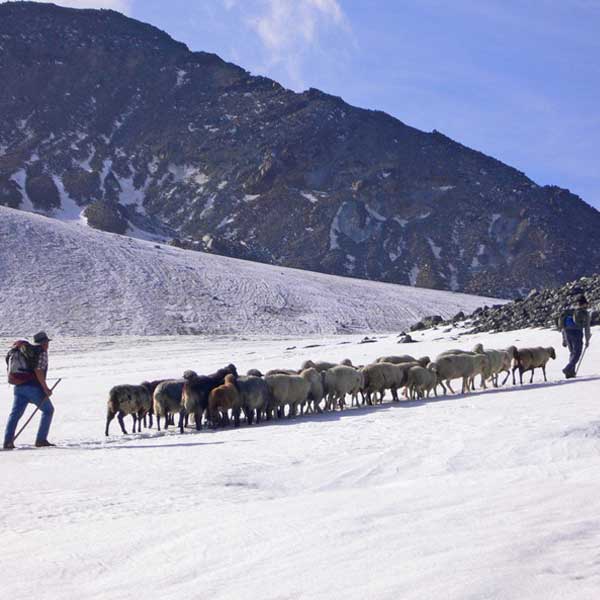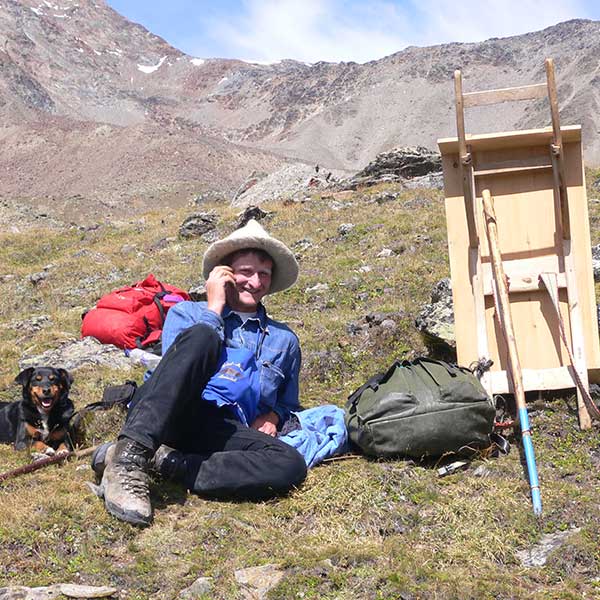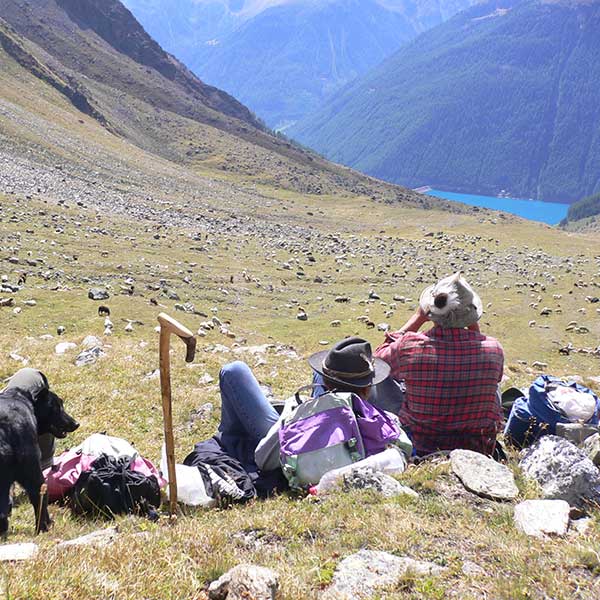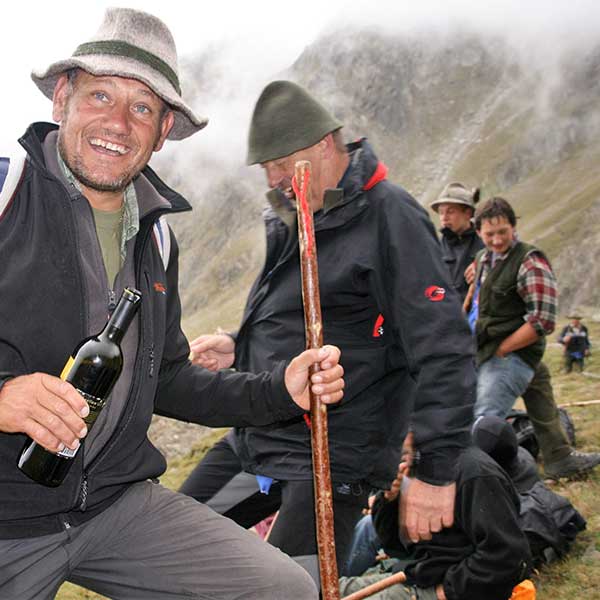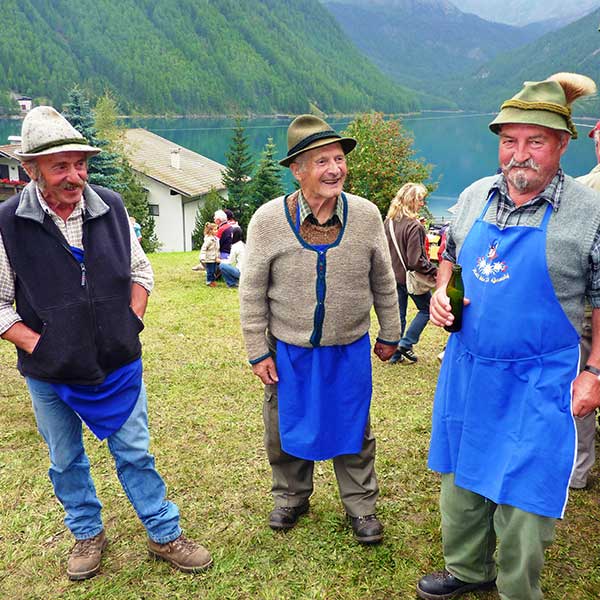Events
Taking 2000 sheep across Similaun glacier as an auxiliary shepherdess
Every year in mid-September, about 2000 sheep are driven across the main Alpine ridge, conquering 515 altitude meters on an ancient sheep footpath – a part of the Via Alpina hiking route – leading across Similaun glacier to Niederjoch col at 3019 meters above sea level. From there, they descend approximately 1300 altitude meters to Vernagt am See. From Ötztal towards Schnalstal. From Austria’s Tirol to Italy’s South Tyrol.
I am an assistant shepherdess
Already in May, there are very good news from the heart of the mountains. Just a single question: “Will you join us?” – and there is only one answer: “Yes, of course!” I am a future assistant shepherdess at one of the most spectacular sheep drives world-wide.

Before they start marching: sheep in front of Martin-Busch-Hütte © Dagmar Gehm
The fantastic sound of the mountains
Sometimes there is already snow in September, then the sheep drive is hard work for both shepherds and animals. In the early morning it’s still biting cold and foggy when the sheepherders start their long walk at Martin-Busch-Hütte, guided by their leader Elmar Horrer.
Slowly the flock of sheep starts moving, paralyzed from the cold. Only much later you hear the tinkling of their tiny bells as they move forward quickly on the narrow footpath. This is the true sound of the mountains.
Two Huge Flocks On Two Days
Already in 1415 an ancient contract was made between the farmers of Vent and Schnals, guaranteeing the right of taking South Tyrol’s sheep to the high Alpine grazing grounds of the upper Ötztal Valley. “About 3000 hectares in Tirol’s Ötztal valley above the mountain village of Vent belong to the farmers of South Tyrol,” explains Josef Götsch, the head of sheep drive organizing team consisting of 21 farmers who have to a pay a kind of “grazing money” for using the pastures.
This deeply rooted sheep drive is called “transhumance” and was declared a National UNESCO Intangible Cultural Heritage in 2011, more precisely two drives via Niederjoch saddle and across Hochjoch col. They take place on two subsequent days to guarantee huge flocks of sheep.

Herdsmen & sheep flock in the foothills of Similaun Glacier © Dagmar Gehm
A stubborn ram
I accompanied the sheep drive five times, finally I received my own herdswoman’s equipment – a blue, embroidered apron saying “Schafalm Niedertal” and a long shepherd’s crook typical for South Tyrolean herdsmen. I am not allowed to talk, nobody should know that I am German. Fortunately I already passed the quite difficult “shepherd’s exam”.
A cutback: the stubborn ram. He didn’t move at all. Also his herd stands still. I try to push him, to heave him up with all my strength. Nothing, the stalwart ram won’t move. And he has the last word. I am getting angry also because I know that smirking herdsman are watching me with binoculars from the opposite slope.

Assistant herdswoman Dagmar with her equipment: the long shepherd’s crook is an absolute must! © Dagmar Gehm
Almost Messing Up Everything
The days before, I messed things up while herding together a flock of sheep in Vent’s pasturelands on the way to Martin-Busch-Hütte at 2501 m. On a glacier snout of Marzellferner I have to herd up about 20 sheep and bring them back to the hut. I take the stubborn bellwether by his horns and try to drag him by calling out the typical hoi-hoi shouts. Then he starts running, I almost can’t follow him and the herd.
Several times the stubborn ram leaves the footpath, together with the whole flock as they follow him blindly. A herding dog would be the right solution now but the Border Collies prefer to stay with their masters. A truly exhausting job! But after a few kilometers I succeed. The older shepherds give me a pat on the back.

Herdsmen leader Elmar Horrer searching for sheep © Dagmar Gehm
Wooly white slopes
Also in the summer, Ötztal’s mountain slopes can turn white – wooly white as thousands of sheep are on their way to the pasturelands. A single shepherd takes care of them. He spends the nights in a new shepherd’s hut, only sometimes he takes a rest in the original, 800-year old hut made of single stones.
The days prior to the great sheep drive are very busy. Equipped with headlamps, we start at five o’clock in the morning, heading toward the higher Alpine regions on slippery footpaths. We search for missing sheep on gravel trails and precipitous trails. Further on, no sheep no trails any more.
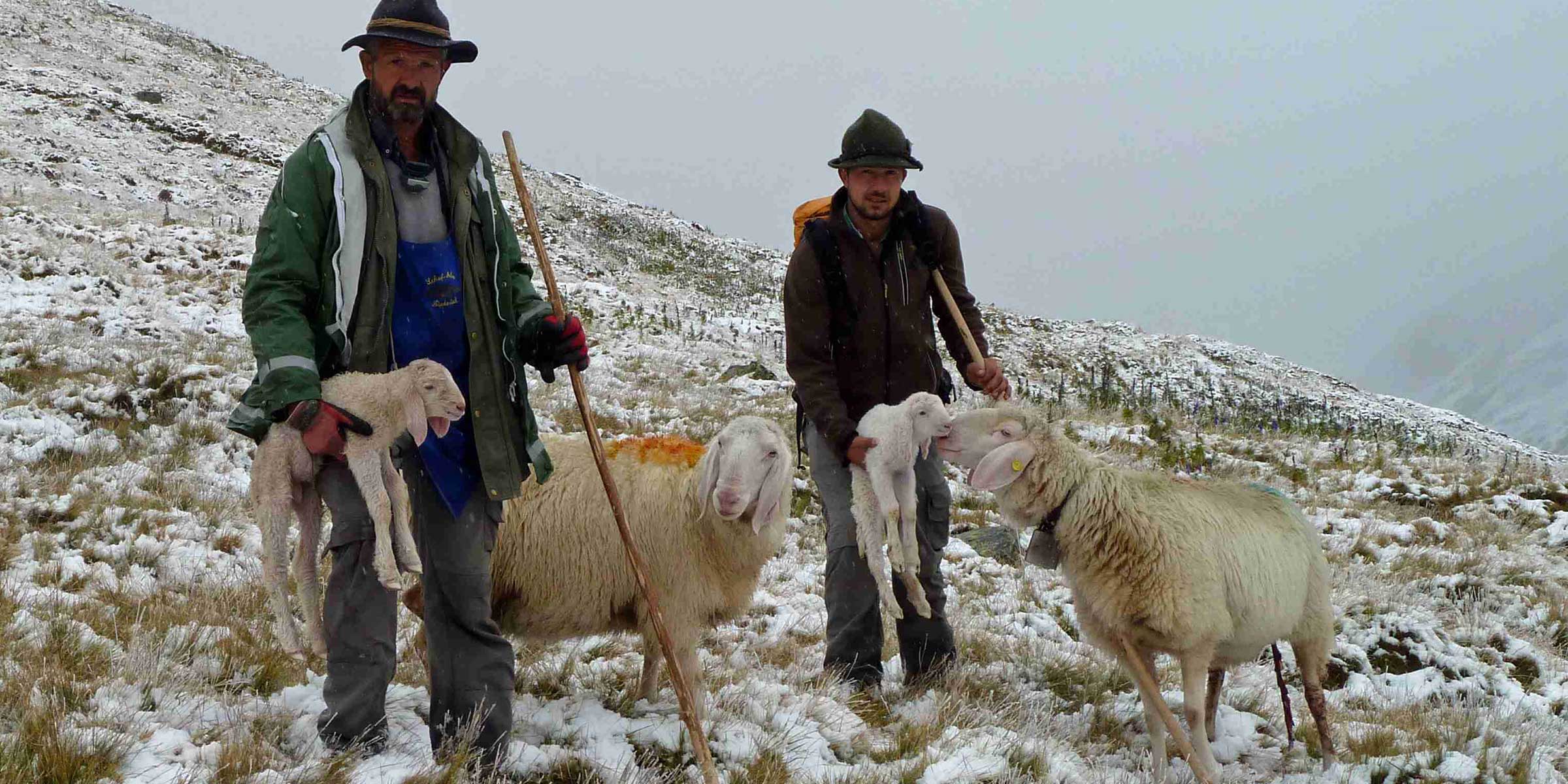
Weather conditions can stretch both the herdsmen and the sheep to the limit © Dagmar Gehm
Sheep rescue in a brook
Fortunately herdsmen are not resentful at all. They are busy again and must rescue a couple of sheep who reached a brook bed – some of the animals already drowned, now they cut-off their earmarks as a proof for their owner. I prefer preparing salt stones, plastering broken legs or marking new born lambs with special colors.
And I am learning my lesson. For example: an ewe who doesn’t accept her new born lamb, taking care only of the older lambs. I feel pity for the little one and wrap it into my apron. But the experienced shepherds already know that a couple of hours later the little lamb suckles milk from its mother. Nature always has a remedy.

Josef Götsch, chairman of the Niedertal Agricultural Association © Dagmar Gehm
One Or Two Percent Won’t Make It
At dusk we return to the pen, marking the youngest lambs and sorting out injured animals who return in a transporter. This is my favorite time of the day. Slowly the shy animals allow us to touch and pet them, or to remove hay and branches from the sheepskin.
Meanwhile other sheep drivers have arrived from Schnalstal, looking for missing sheep in the steep slopes. They won’t find all of them. Some days later, Elmar must ascend once again from Schnalstal, and try to find them but one or two percent are victims of the mountains.
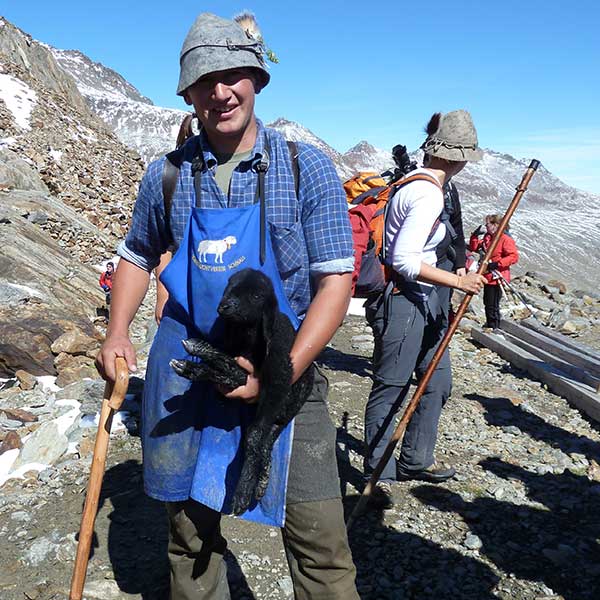
There is always a black sheep … somewhere! © Dagmar Gehm
Keeping in check sheep and mountain hikers
Saturday, eight o’clock in the morning. Each sheep driver has his exact position. In front of the herd, next to the herd or behind the herd. But never in the middle of it. “The biggest problem are undisciplined hikers,” states Elmar. “If they show up in the middle of a sheep flock it can become very chaotic.”
Once it also happened that the animals turned around and went back during a rest stop close to Similaun glacier. It took several hours to steer them in the right direction again.
On narrow switchbacks
Finally the huge crowd of sheep drivers, assistants, dogs and animals starts to move. First it seems a bit uncoordinated but the caravan soon forms an invisible funnel, heading towards Similaun glacier. Barking dogs, shouting herdsmen, static waymarks.
We are stumbling across gravel fields while the sheep walk on signposted paths. Huge boulders and rubble fields make our march more difficult and exhausting. The animals swiftly leave the glacier fields behind, past Similaunhütte at the height of the pass. Lined up like pearls on a string on dangerous paths and narrow trails, across steep ravines and precipitous slopes.
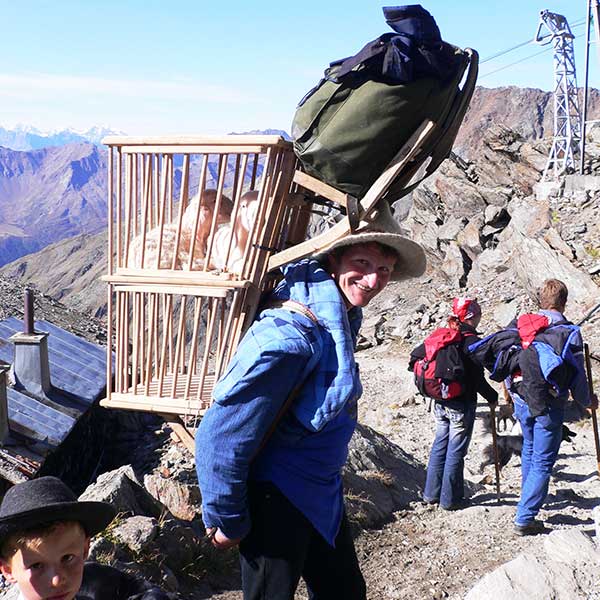
Giving a piggy-back ride to the youngest lambs © Dagmar Gehm
Shepherds Festival On Arrival
Two lambs are born on the way down, they are carried down to the valley. Overlooking the Vernagt water reservoir, the herdsmen enjoy their last rest stop and a hearty bacon and cheese snack, reminding of long past times. The tinkling bells as a lovely backdrop. Wide open pasturelands and lush Alpine meadows as far as your eyes can reach.
I take a sip of red wine right from the bottle. The accident-free arrival of both men and animals is celebrated in Vernagt / Schnalstal with a great festival in the meadows, accompanied by traditional whip cracking performances. The sheep farmers – wearing blue aprons, felt huts and shepherd’s crooks – warmly welcome their animals.
Sheep Drive Events in 2016
Saturday, 10 September: at 8.00 am from Martin-Busch-Hütte close to “Niedertal Alm“; arrival of the sheep flock in Vernagt am See in the afternoon, shepherds festival.
Sunday, 11 September: starting in the early morning close to “Rofenberg Alm”; arrival in Kurzras in the afternoon, shepherds festival.
More Details: Ötztal Tourismus Vent, Venterstraße 28, Tel. 0043 (0)57200 260, www.vent.at/en
More articles from Dagmar Gehm:

